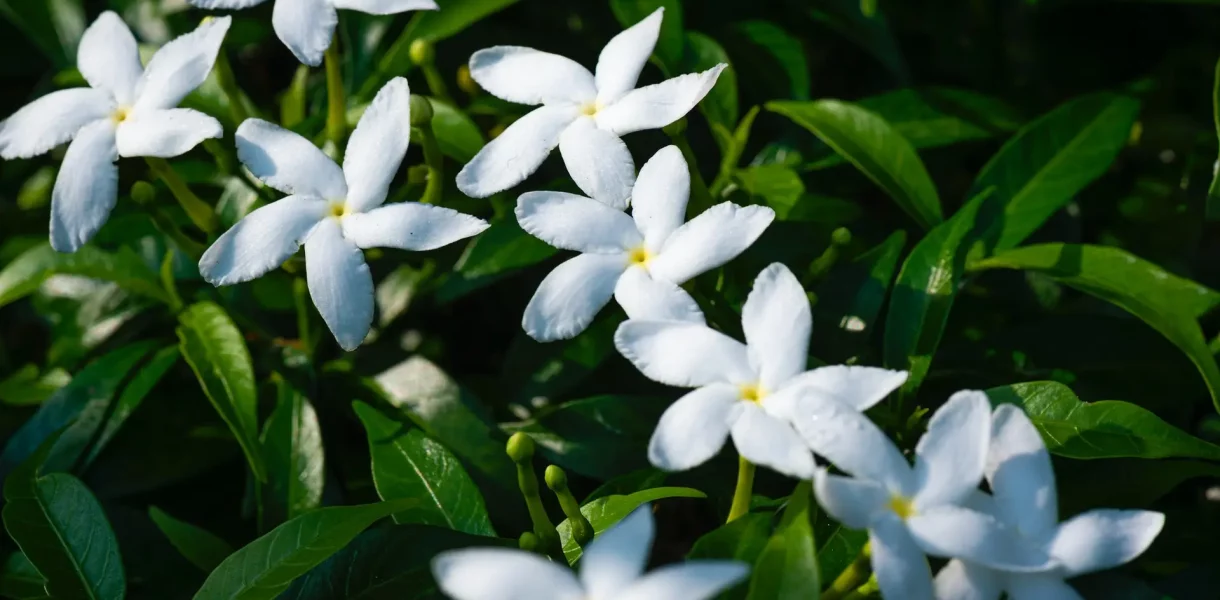Introduction
In the poetic verses of Federico García Lorca’s “Bodas de sangre,” the essence of jasmine blooms, encapsulating the soul of Andalusia despite its distant origins from China. Renowned for its ethereal beauty and captivating fragrance, jasmine holds a revered place in Spanish culture, epitomizing love, beauty, and spirituality. This article delves into the captivating world of jasmine, exploring its botanical intricacies, cultural significance, and horticultural practices.
Botanical Background
Jasmine, belonging to the olive family (Oleaceae), enchants with its delicate blossoms reminiscent of small black olives. While several species exist, the most cultivated in Spain are the climbing varieties. Among the notable species is the winter jasmine (Jasminum nudiflorum), celebrated for its premature winter bloom, adorning ancient gardens with its abundant yellow flowers. However, contemporary trends have favored the ubiquitous yellow jasmine (Jasminum mesnyi), prized for its cascading effect when grown on walls.
Varieties of Jasmine
While yellow jasmine varieties hold allure, it’s the white-flowered species that reign supreme in Spain. The Chinese jasmine (Jasminum polyanthum), Spanish jasmine or royal jasmine (Jasminum grandiflorum), and the common jasmine (Jasminum officinale) are revered for their intoxicating fragrance, permeating the air especially on warm summer days.
Chinese Jasmine
Originating from southwest China, the Chinese jasmine, also known as pink jasmine due to its blush-colored buds, boasts a unique flowering pattern. Bursting into a profusion of blooms in May, it blankets the plant with clusters of up to forty flowers, obscuring its leaves beneath a blanket of white petals. Unlike its counterparts, it exhibits a singular, overwhelming bloom annually, making it less cold-hardy and more suited to warmer climates.
Spanish Jasmine
The Spanish jasmine, or jasmine of large flowers, earns its grandiflorum epithet with its continuous, months-long bloom. With blooms ranging from pure white to delicate pink hues, it graces gardens with its perpetual beauty, often flowering year-round in favorable climates. Its close relative, the common jasmine, shares its resilience to cold, capable of withstanding temperatures as low as -10 degrees Celsius and regenerating from root if damaged by severe frost.
Cultivation and Care
Jasmines thrive in containers on terraces, benefiting from consistent moisture levels and organic fertilization for optimal growth and flowering. Pruning techniques vary among species, with light trimming recommended post-bloom for Chinese jasmine to maintain shape and remove spent flower heads. Spanish and common jasmine benefit from pruning to control size and encourage new growth, ensuring abundant flowering on young shoots with adequate sunlight exposure.
Cultural Significance
In the “Flora agrícola y forestal de al-Andalus,” the etymology of jasmine is traced to the Persian term “yāsamīn,” also applied to the common privet (Ligustrum vulgare). Whether meaning “gift of God” as purported, the presence of jasmine evokes celestial imagery, with its white stars symbolizing divine grace and beauty.
Conclusion
From the sun-kissed landscapes of Andalusia to the misty hills of China, jasmine weaves a tale of beauty, resilience, and enchantment. As Lorca’s verses evoke, it is not merely a flower but a celestial gift, bestowing its fragrance upon all who encounter its blossoms. Through cultivation, care, and appreciation, the timeless allure of jasmine continues to captivate hearts and gardens across the globe.



